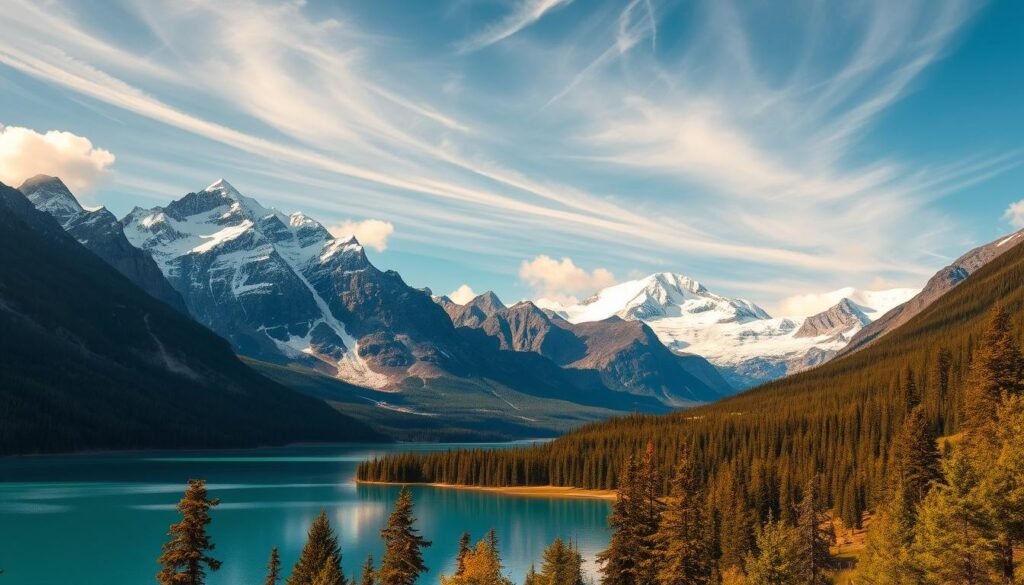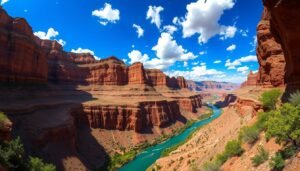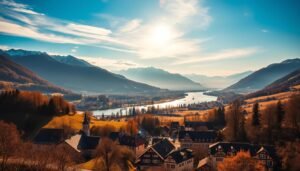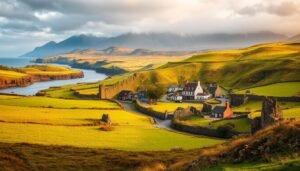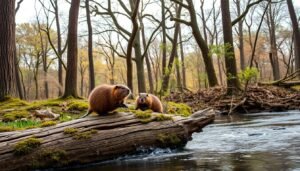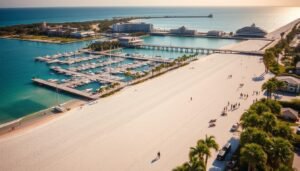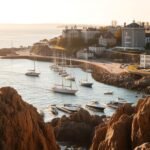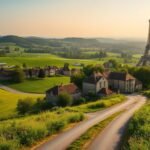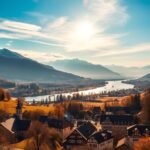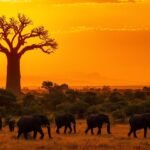Did you know Montana covers 147,042 square miles, making it the fourth-largest state in the U.S.? That vastness shaped how I planned my trips and why I learned to travel slowly.
I wrote this guide as a friendly, first-person road map for nature-rich stops, culture-filled towns, and easy planning tips for a calm Big Sky adventure. I described the sweep of mountains and prairie horizons that stole my heart, and I shared how I paced a year of options.
I mixed famous national park highlights with quieter gems so you get both iconic views and peaceful detours. I introduce Glacier National Park and Yellowstone early, so you can decide how many days to give each without missing favored side routes.
Major gateways like Bozeman Yellowstone International and Billings Logan, plus Interstates 90 and 15, made logistics simple during my trips. Expect clear notes on where the views wowed me, how I beat crowds, and which city bases added comforts between wild days.
Key Takeaways
- I wrote this as a traveler for travelers, focusing on nature and easy planning.
- Big Sky’s size means you should plan driving times and scenic pauses.
- Glacier National highlights pair well with lesser-known detours for balance.
- Use Bozeman and Billings as practical city bases for logistics.
- Seasonal swaps matter: routes change for summer and winter trips.
Why Montana captured my heart: mountains, rivers, and small-town charm
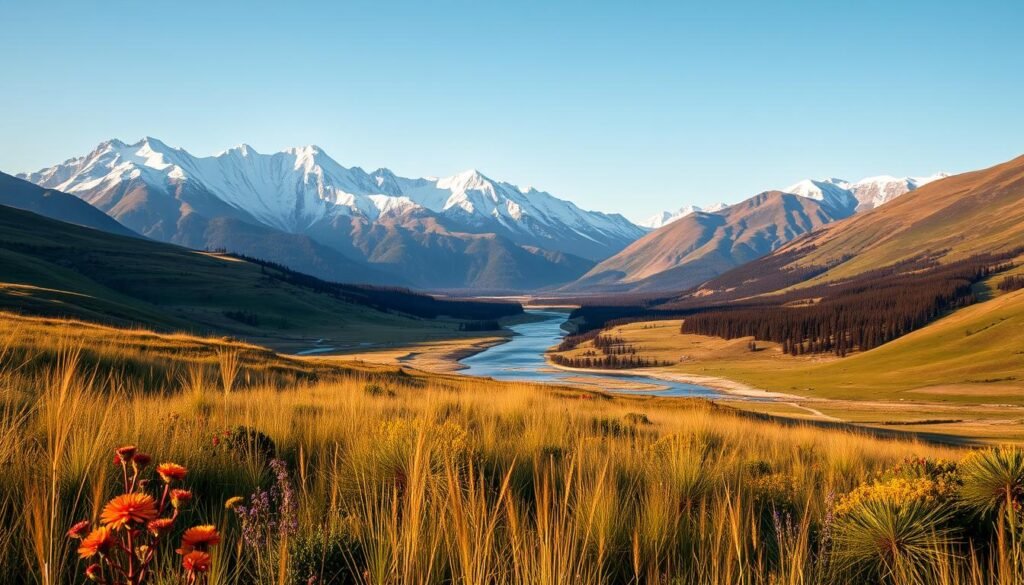
A road around this state hooked me fast: soaring mountains, river moods, and the easy charm of local towns. I planned a loop that let me breathe between long vistas and lively squares.
How I planned my past road trip across the state
I clustered regions—Glacier up north, Yellowstone to the south, and town bases like Bozeman and Livingston—to keep daily drive miles reasonable. I mixed downtown energy with quiet valleys such as Paradise Valley, and left space for local tips and spontaneous detours.
Best time to go for summer hiking, winter skiing, and shoulder-season serenity
For long hikes and wildflowers, summer was ideal. winter offered empty roads near ski areas and crisp sunrise light. Shoulder seasons felt like a sweet spot for cool mornings, fewer crowds, and flexible plans that let me enjoy local culture and unearthed small gems along the Yellowstone River.
- I booked lodging early in peak months and checked road conditions the night before big drives.
- Built rest days in one town to soak up downtown life and slow travel rhythms.
| Season | Highlights | Tip |
|---|---|---|
| Summer | Long hikes, wildflowers, alpine views | Start early; reserve lodging |
| Shoulder | Cool mornings, small crowds, flexible activities | Mix hikes with museum or gallery stops |
| Winter | Ski hubs, frosty light, quiet drives | Check road reports and weather windows |
My guide to the best places to visit in Montana

I built this itinerary by blending alpine highlights, dramatic drives, and lively town stops so each day felt full but flexible. I mapped regions into clear blocks and left wiggle room for small discoveries.
How I balance national parks, scenic drives, and culture in one itinerary
I began with three big areas: Glacier National alpine scenery, the Beartooth Highway high-alpine drive, and Yellowstone’s geyser country. Then I threaded in artsy cities like Livingston and Bozeman for evening culture and repairs between long days.best-time-to-visit-acadia-national-park
Practical habits that kept the trip calm:
- I picked entrances and routes that matched my pace and favored quiet mornings at gates.
- Each park and area got at least two nights for hiking, scenic drives, and one cultural deep-dive.
- I grouped stops by driving range to avoid backtracking and left buffer afternoons for serendipity.
“Balance marquee park days with local evenings and the trip feels richer.”
Glacier National Park: alpine drama, Going-to-the-Sun Road, and wild hikes
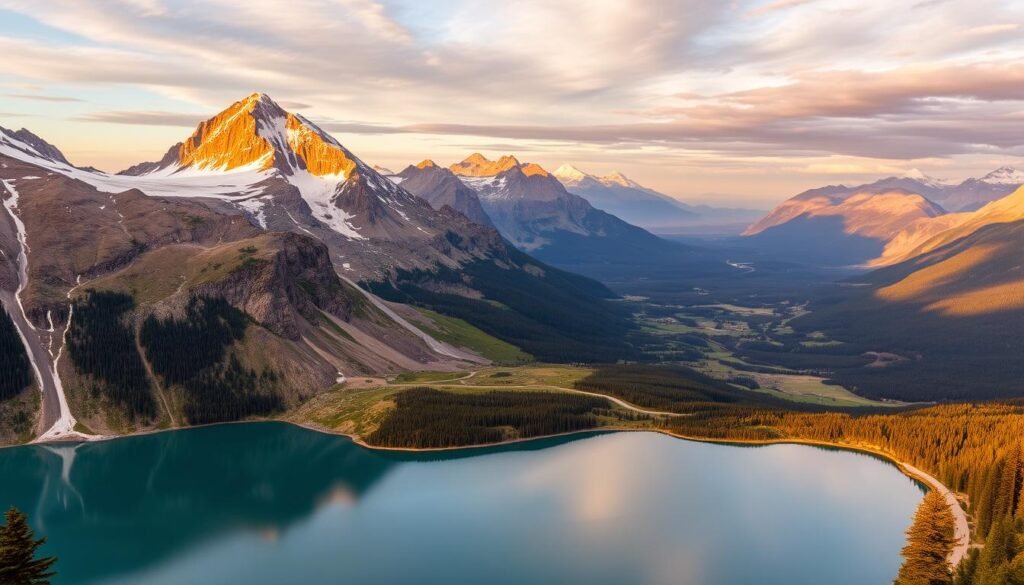
I still remember the first sunrise I saw along Going-to-the-Sun Road—light spilling across serrated ridgelines and glacier-blue lakes. The park stretches over a million acres, and that scale shaped how I planned each day.
Iconic routes and views: Highline, Grinnell, and Lake McDonald cruises
I hiked the Highline and Grinnell trails for sweeping skyline views and wildflower meadows. A Lake McDonald cruise gave me a water-level view of those serrated peaks and a fresh perspective after dusty miles on the trail.
Wildlife moments: mountain goats, moose, and the chance of grizzly bears
Wildlife felt close but never rushed. I saw mountain goats and a moose, kept distance, and carried bear spray for grizzly bears. I also watched bald eagles ride thermals above glacial valleys.best-places-to-visit-in-thailand
Where I stayed and why: Lake McDonald Lodge nostalgia
Staying at Lake McDonald Lodge felt like stepping into park history—cozy woodwork, old-fashioned keys, and an antique piano in the lobby. It made long days of hiking and drives feel rooted and restful.
Insider tips: permits, miles, and beating the summer crowds
I drove Going-to-the-Sun at dawn and used early entrance times to snag parking at Logan Pass. I tracked daily miles, paired one big hike with an easy stop, and booked permits early to avoid peak crowds. Layers were essential—alpine wind can change fast, and the best light is often early or late.
Yellowstone National Park: geysers, canyons, and the West Entrance advantage
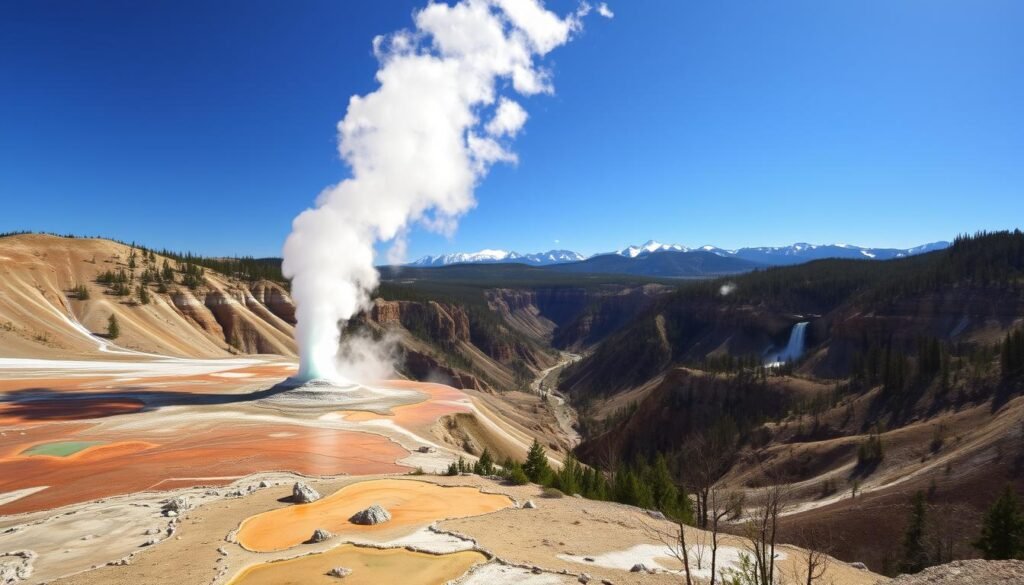
Arriving through West Yellowstone gave me quick access to the park’s busiest highlights. I based my nights near the West Entrance so early starts to geyser basins felt easy and short on miles.
My can’t-miss stops included sitting on the Old Faithful Inn porch and watching Old Faithful erupt, then drifting to Grand Prismatic Spring for its full palette when winds calmed. The Grand Canyon of the Yellowstone stunned me—Lower Falls at Artist Point delivered thunder and mist that soaked the camera lens.best-time-to-visit-jamaica
Trail ideas and short hikes
I mixed short boardwalk loops through thermal basins with hiking trails along the canyon rim and Yellowstone Lake. These hikes kept daily miles manageable and let me balance big views with quieter water-side moments.
Wildlife etiquette I followed
I gave animals wide space and never approached bison or elk. I scanned river corridors for bald eagles and kept binoculars ready. Respecting wildlife distances felt like good park citizenship and kept my days calm.
Traffic, parking, and timing tips
Peak season taught me to arrive before dawn, use lesser pullouts, and regroup midday when lots filled. I refueled at gateway shops so I could linger at overlooks without worry. Often restrooms and boardwalks were just steps away from major sights.
“Early starts, patient pacing, and respectful distances made Yellowstone feel effortless.”
| Area | Highlight | Quick Tip |
|---|---|---|
| Geyser Basins | Old Faithful, Grand Prismatic | Visit early; watch wind for best colors |
| Canyon | Lower Falls, Artist Point | Short rim hikes; bring rain layer |
| Lake & Rivers | Yellowstone Lake, river corridors | Scan for birds and eagles; pack snacks from town |
Bozeman: a lively mountain city with trails, shops, and hot springs
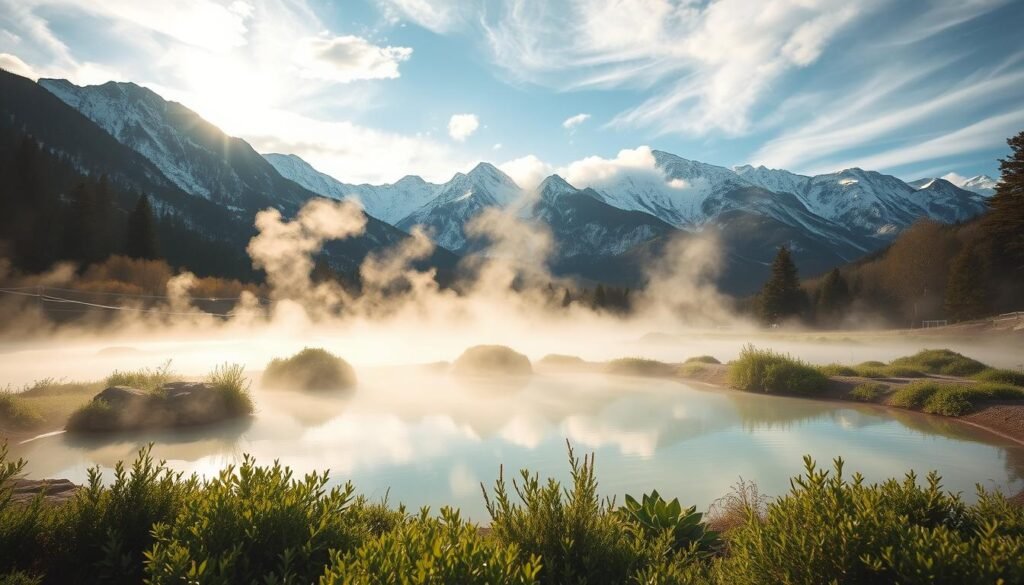
I arrived in Bozeman and unpacked quickly. The town felt like a basecamp for short adventures and local flavor. Trailheads, galleries, and breweries sat within walking range, so I could switch plans on a whim.
Downtown energy: breweries, boutiques, and local food I loved
Downtown buzzed every evening with craft beer flights and farm-to-table food. I wandered indie shops and found practical layers and trail snacks just steps away from my hotel.when-is-the-best-time-to-visit-hawaii
Outdoor hits close to town: the “M” Trail and mineral-rich soaks
I hiked the “M” Trail for quick cardio and big valley views. A soak in nearby hot springs eased sore legs and set me up for the next day.
- I grabbed a rental at Bozeman Yellowstone International Airport and was on the road in minutes.
- The Museum of the Rockies added a paleontology detour that felt wonderfully different from hikes.
- With Big Sky nearby, I squeezed mountain options into short drives without overloading my itinerary.
“Bozeman made it easy to balance downtown culture with hiking trails and restorative soaks.”
| Feature | Why I Liked It | Quick Tip |
|---|---|---|
| Downtown | Breweries, shops, and restaurants within walking distance | Plan an evening crawl for local cuisine and music |
| “M” Trail | Short hike with big valley views; great first-day warm-up | Go early for calm light and cooler temps |
| Hot Springs | Mineral soaks that restore tired legs | Bring a towel and small toiletries |
| Airport & Rental | Fast pickup made logistics simple | Book a compact car for narrow mountain roads |
Big Sky and Whitefish Mountain Resort: year-round adventure hubs
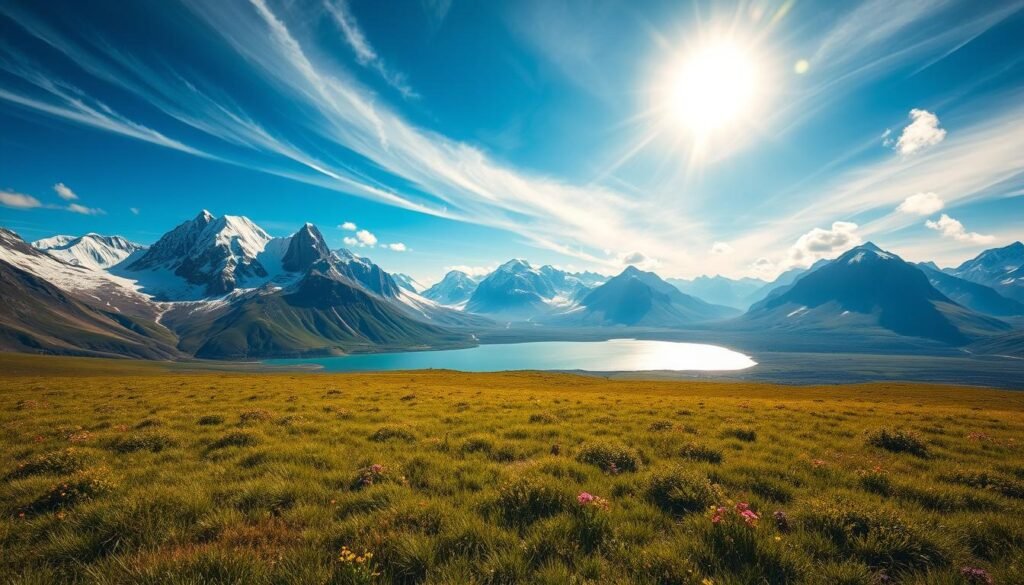
I chased big-mountain afternoons and quiet summit mornings at two lively resorts that switch gears with the seasons.
Whitefish Mountain Resort gave me over 3,000 acres of terrain to explore, scenic lifts, and the Danny On Trail that felt like an alpine parade of color.
Big Sky’s 5,800+ acres offered vast runs where I could string together long laps or slow down for scenic glades. In winter I hunted powder and loved the festive lodge vibe.best-places-to-visit-in-august
Ski season thrills
I found terrain for every mood: steep pitches when I wanted a challenge and mellow groomers for recover-day laps. Ski lessons and rental shops made logistics simple for friends and new skiers.
Summer and shoulder-season fun
Come summer I swapped gear for biking, ziplining, and scenic chairlift rides. Trails filled with wildflowers, and the Danny On ride gave sweeping panoramas I still remember.
- I booked midweek sessions to dodge crowds and score shorter lift lines.
- I scheduled one mellow afternoon at a nearby hot springs to keep legs fresh.
- Both resorts felt set up for outdoor enthusiasts—guides, lessons, and easy rental access.
“Whether I went full-send or easy-cruise, each day felt like a choose-your-own-adventure.”
Beartooth Highway: my favorite high-alpine drive from Yellowstone to Red Lodge
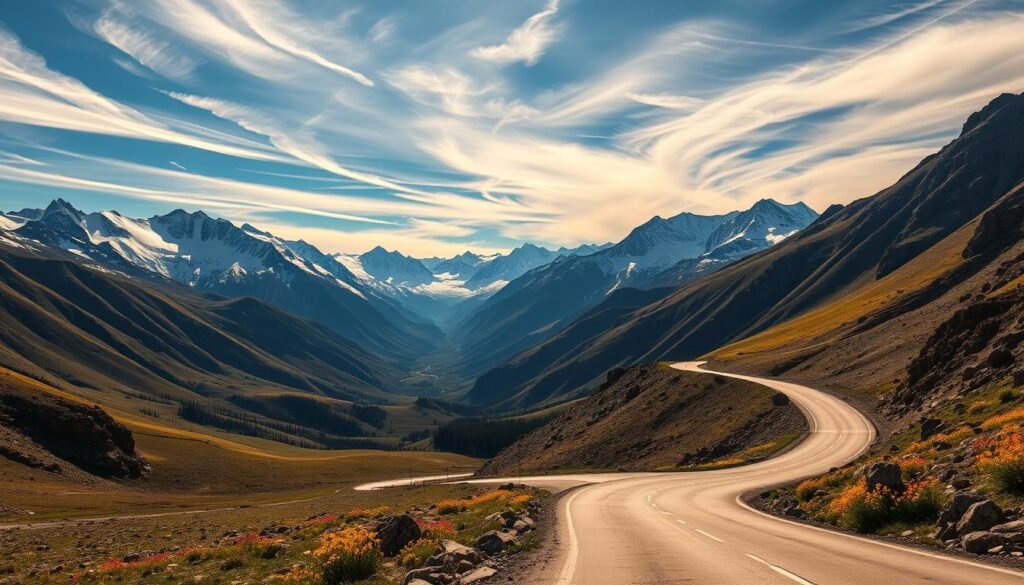
I planned a slow roll across the Beartooth so I could stop often and actually see the high country change with each mile. The route runs 68 miles from Yellowstone’s Northeast Entrance to Red Lodge and it felt like a compact alpine road trip.
Stops and views: Rock Creek Vista Point, glacial lakes, and tundra meadows
Rock Creek Vista Point handed me sweeping views and a calm pause before the big climbs. Glacial lakes sat like mirrors below sharp ridgelines, and tundra meadows unfurled with low flowers and busy marmots.
Safety notes: switchbacks, weather windows, and leisurely miles
I kept speed steady on steep switchbacks and used pullouts for photos. I timed starts for blue skies; a sunny morning still hides icy corners in shade.best-time-to-visit-brazil
- Short hikes around lakes loosened sore legs and added quiet time.
- The Top of the World Store made a fun mid-route snack stop.
- I watched for wildlife in the high meadows—elk, mountain goats, and the chance of grizzly bears.
“The Beartooth reminded me that the journey itself can be the day’s main event.”
Red Lodge was my town of choice for a cozy meal and a stroll after a long, scenic day.
Livingston and Paradise Valley: Yellowstone River towns, art, and hot springs
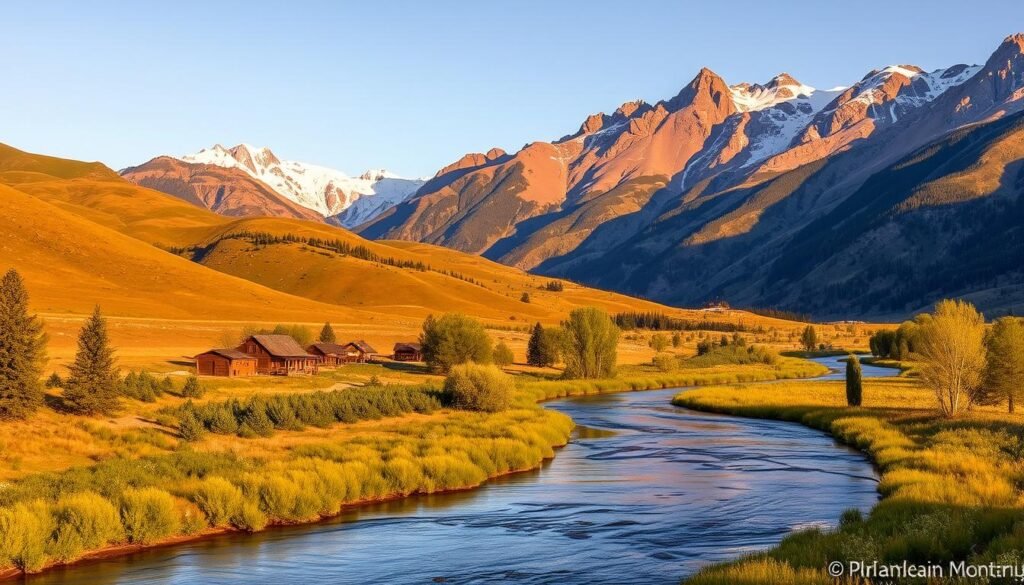
Livingston felt like a riverside stop where Western neon meets quiet gallery afternoons. I eased into the rhythm with coffee by the Yellowstone River and a slow walk through local galleries that show regional culture.
Riverside charm and galleries in a Western setting
The town’s storefronts and bookshop made for easy morning wandering. I found small shops and practical trail snacks, and spent an hour planning hikes while the river moved steadily by.
Chico Hot Springs, Pine Creek Trail, and sunset drives I still dream about
Paradise Valley stretches from Livingston toward Gardiner and frames long sunset drives with gold light and mountain silhouettes that stay with you. A soak at Chico hot springs after the Pine Creek Trail waterfall felt like pure relief.
I kept my distance from wildlife and scanned the valley for bald eagles and elk. Knowing grizzly bears use this area, I carried bear spray and made noise on wooded sections of the trail.
“Long lunches, side roads with broad pullouts, and slow evening drives made this stretch my perfect base between busy park days.”
American Prairie Reserve: big skies, bison herds, and nights under the stars
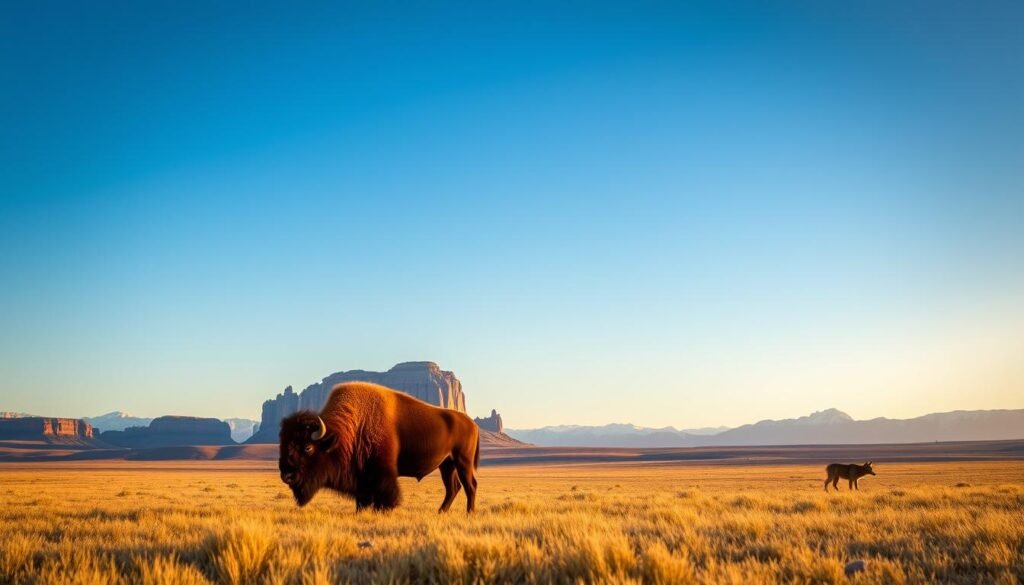
The American Prairie Reserve spans more than 450,000 acres of open grassland and aims to grow even larger. I traded alpine climbs for flat horizons and felt the state breathe differently under a broad dome of sky.best-time-to-visit-dubai
Trails I hiked and wildlife I spotted on the open range
I walked the PN Ranch and Buffalo Camp Loop for rolling views, wildflowers, and constant birdlife. Hawks and bald eagles rode thermals while pronghorn and elk moved like punctuation on the plain.
Bison herds crossed slow and steady; I kept distance and watched quietly. For an outdoor enthusiast, the silence rewards patience and careful pacing.
Discovery Center, fossils, and a deeper look at prairie ecology
The American Prairie Discovery Center tied restoration stories to the land. I learned how corridors bring wildlife back and how small actions matter across this vast area.
- My solar-powered yurt rental made stargazing effortless—no light pollution, just the Milky Way.
- I paired the trip with the Great Plains Dinosaur Museum to see fossils and prep work up close.
- Gravel roads invited easy biking; I packed water and checked wind shifts before rides.
“This place reframed Montana’s beauty—subtle textures, quiet sounds, and a slower, deeper breath.”
Helena to the Gates of the Mountains: history, culture, and sheer limestone cliffs
I spent a morning in Helena touring the Montana State Capitol and savoring how civic art and old architecture tell a larger story. The rotunda, stained glass, and the Original Governor’s Mansion felt like a compact history lesson that warmed me up for the afternoon.
Montana State Capitol highlights and a walk through Last Chance history
I lingered over murals and chamber details, then slipped into Last Chance Gulch for coffee and local galleries. That short city stroll mixed gold-rush grit with modern culture, and the town’s cafes made planning easy.
Boat tours through towering canyons and the Mann Gulch lesson
A short drive brought me to a guided boat tour through the Gates of the Mountains, where sheer limestone walls frame calm river water. I watched bald eagles cruise above and felt the canyon’s scale pull the day into a quieter mood.
I hiked Meriwether Canyon and the Mann Gulch trails that afternoon. My guide’s account of the 1949 wildfire was sobering and grounded the beauty in hard-earned lessons.
“Pair an early boat ride with an afternoon hike for a relaxed, thoughtful day.”
- I started with the Capitol for history, then shifted to canyon scenery without long drives.
- This compact loop made Helena a practical place for mixing mountain views and civic stops in a single day.
Whitefish City Beach and the Montana Rockies: easy lake days and rugged peaks
A lazy afternoon at Whitefish City Beach showed me how lake days and mountain peaks can fit into the same calm hour. The beach sits on the southern tip of Whitefish Lake and offers roughly 270 meters of sandy shoreline.
The site has restrooms, changing rooms, picnic tables, shaded gazebos, a playground, a boat launch, and lifeguards in summer. Kayak and paddleboard rentals make it simple to slide onto the water for a mellow paddle framed by forested ridges.
Kayaks, picnic spots, and steps-away facilities I appreciated
I grabbed a kayak rental and paddled while watching osprey and bald eagles drift overhead. The sandy shoreline made a perfect picnic base, with restrooms and changing rooms just steps away.
- I hiked nearby trails in the morning, then swam before dinner.
- The nearby resort scene added biking, scenic lifts, and in winter a full menu of ski and skiing options.
- On cool nights I daydreamed about a hot springs dip elsewhere in the Rockies.
I loved how quickly I could move from town coffee to a mountain overlook or a beach nap. With Glacier National Park within striking distance, it was easy to blend lake leisure with alpine exploration. For more local ideas, see top Whitefish activities.
“Whitefish’s relaxed vibe gave me big nature with very little hassle.”
Conclusion
By the end of my loop I had woven glacier ridgelines, geyser basins, and quiet river evenings into one slow story.
I traced Glacier National Park’s Highline and Lake McDonald, then moved through yellowstone national park via west yellowstone for easy starts and calm crowds. I mixed long hiking days and short trails with resort downtime at Big Sky and Whitefish.
One clear habit helped: pick the parks you crave first, add a cultural stop and a scenic drive, and leave space for surprises. Paradise Valley and Livingston felt like a second home after hot springs and gallery afternoons.
The mountain rhythm—whether I chose ski or skiing, boots or board—kept me smiling. Follow the light, slow your pace, and let the Big Sky lead you home.


